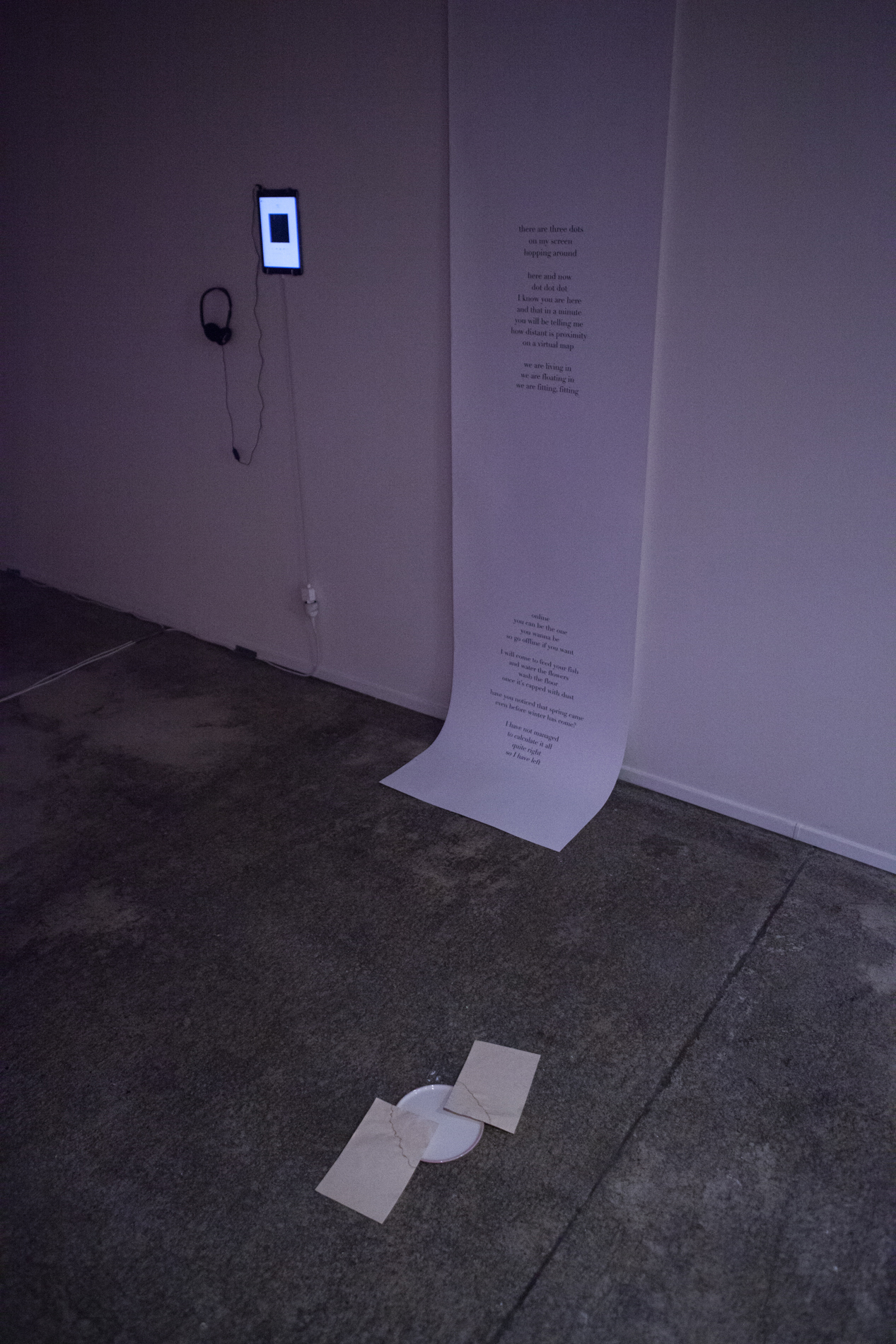not to capture
an image,
to maintain one
within OFF Festival Bratislava
artists: Leontína Berková, Alžbeta Halušková, Martina Mäsiarová, Dušan Prekop, Marie Tučková
artists: Leontína Berková, Alžbeta Halušková, Martina Mäsiarová, Dušan Prekop, Marie Tučková
2 Nov 2018 – 11 Jan 2019
Bratislava, Slovakia

The process of democratization of photography is unstoppable. The medium of photography once again stands on the threshold of re‑evaluation of its own means of expression, its definition and also its function. Personal archives in the forms as we were familiar with them no longer exist. They have been transformed into internet profiles, providing a thoroughly curated audiovisual experience. Our virtual alter egos reflect the idealized visions of our individual existences. They do not reflect the reality, nor our ideas about ourselves. They provide the optics in which we want the
‘others’
to see us.
Since its invention, photography has been closely linked to death — it deadens the present moment. It took away the medium of painting its original function of realistic recording of ‘reality’, it even ‘steals the soul’ of the object of its interest in radical view. The ‘mirror with memory’, as photography was called in the 19th century following the daguerreotype technique, gradually transformed into a photographic negative, an instant polaroid shot, data on a memory card, even a constellation of pixels on the screen of our smartphones. Every new technology, progress, improvement presumed the extinction of the previous technology. As this development is proportional to the increasingly simpler and faster production of photographic images, the end of photography, the end of the photographic craft and the end of photography as a work of art were predicted several times. The disappearance of the uniqueness and magic of the photographic image that was present in its early days.
In reality, however, what happened was ‘only’ the necessary transformation of the photographic medium. The emerging generation of artists either directly adopted new technologies or adopted their means of expression in their work.
Since its invention, photography has been closely linked to death — it deadens the present moment. It took away the medium of painting its original function of realistic recording of ‘reality’, it even ‘steals the soul’ of the object of its interest in radical view. The ‘mirror with memory’, as photography was called in the 19th century following the daguerreotype technique, gradually transformed into a photographic negative, an instant polaroid shot, data on a memory card, even a constellation of pixels on the screen of our smartphones. Every new technology, progress, improvement presumed the extinction of the previous technology. As this development is proportional to the increasingly simpler and faster production of photographic images, the end of photography, the end of the photographic craft and the end of photography as a work of art were predicted several times. The disappearance of the uniqueness and magic of the photographic image that was present in its early days.
In reality, however, what happened was ‘only’ the necessary transformation of the photographic medium. The emerging generation of artists either directly adopted new technologies or adopted their means of expression in their work.
What is the position of portrait photography when self‑portrait is reduced to a banal narcissistic act? In 2016, out of the 40 billion images posted on Instagram, 262 million were
‘selfies’. What impact will these facts, as well as the new image‑sharing platforms, create for the upcoming generation of artists?
Despite the visual supersaturation and degradation of all forms of photographic images, its relevance is on the rise. The simplest example of this is the ever‑increasing tendency to communicate through the image at the expense of the written word, which may gradually lose its meaning. Photography is not over, and probably will not be over. Not in the near future. However, its established forms, genres, and the way we encounter photography are conjectured.
The exhibition ‘not to capture an image, to maintain one’ presents experimental approaches to (technical) images and their transformation back into three‑dimensional space, balancing on the boundary between analog and digital space, personal experience and impersonal statement in era so oversaturated with images that they lack any value. Multimedia installation of fragments of works of individual authors is based primarily on their mutual confrontation, on new contexts and content elements resulting from partial abolition of individual authorship or comprehensive artistic testimony. This exhibition is not about recording, its about the way we observe.
“Every photograph reinforces the aura. Can you feel it, Jack? An accumulation of nameless energies.”
Don DeLillo, White Noise
Despite the visual supersaturation and degradation of all forms of photographic images, its relevance is on the rise. The simplest example of this is the ever‑increasing tendency to communicate through the image at the expense of the written word, which may gradually lose its meaning. Photography is not over, and probably will not be over. Not in the near future. However, its established forms, genres, and the way we encounter photography are conjectured.
The exhibition ‘not to capture an image, to maintain one’ presents experimental approaches to (technical) images and their transformation back into three‑dimensional space, balancing on the boundary between analog and digital space, personal experience and impersonal statement in era so oversaturated with images that they lack any value. Multimedia installation of fragments of works of individual authors is based primarily on their mutual confrontation, on new contexts and content elements resulting from partial abolition of individual authorship or comprehensive artistic testimony. This exhibition is not about recording, its about the way we observe.
Ľuboš Kotlár
“Every photograph reinforces the aura. Can you feel it, Jack? An accumulation of nameless energies.”
Don DeLillo, White Noise
 *photo by Radovan Dranga
*photo by Radovan Dranga